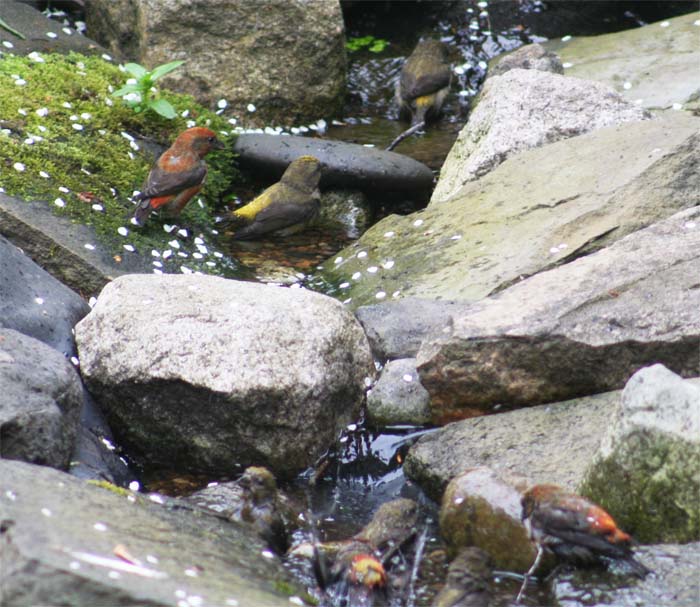
05 Jun Spring on Butyl Creek, 2013
Posted June 5, 2013 from Seattle, WA
Butyl Creek is a 10 ft. recirculating creek in our backyard on residential Beacon Hill. In Seattle all the creeks were sent underground to the Westport sewage station long ago, so birds, who all love and need to bathe, very much appreciate any moving water they can find.
The migration seemed slim this year. It’s notoriously difficult to correctly interpret meaning from migration data, so I won’t try. A crew of Western Tanagers spent a week or so in the neighborhood. Here the brightest of the W T males gets ready for a bath.
Here he’s going at it.
I’m putting up one more shot of this guy.
The Yellow-rumped Warbler wave blew through really fast. Here are two bathing in the creek. There were also Orange-crowned, MacGillivray’s, Yellow and Wilson’s Warblers at the creek this year. (We missed a key week of the migration).
Unlike most springs, we also had visits from a local flock of Red Crossbills. Red Crossbills are finches, but ecologically they are more like Parrots. Like Parrots they are seed-predators, in that when they eat seeds there is nothing left of the seed and the trees procreative plans are thwarted. In the Northwest, Red Crossbills and trees are always engaged in a war of epic proportions. The trees communicate with each other and starve the Crossbills year after year by producing tiny seed crops. Then when the Red Crossbills have mostly been starved out, the trees go nuts with a massive crop, insuring that the Crossbills won’t have time to eat them all.
Here is another shot of the Red Crossbills. This was a starvation year for them in the mountains so the flocks came down to the lowlands where they lived off nonnative conifers and deciduous trees that aren’t in the loop.
In our trips afield, not on Butyl Creek, I got a few shots worthy of this blog. Here is a Red-breasted Sapsucker that was in a clearcut in Kitsap County foraging in the logging debris. I despair of ever painting them well enough to show just how dapper they can look with their red, white, black and even yellow color scheme.
And here is a Black Tern, not a great photo but what a great bird. It forages for insects like a swallow and is somewhat rare on the west side of Washington in migration. The pier was at Juanita Bay Park in Kirkland.








Sorry, the comment form is closed at this time.